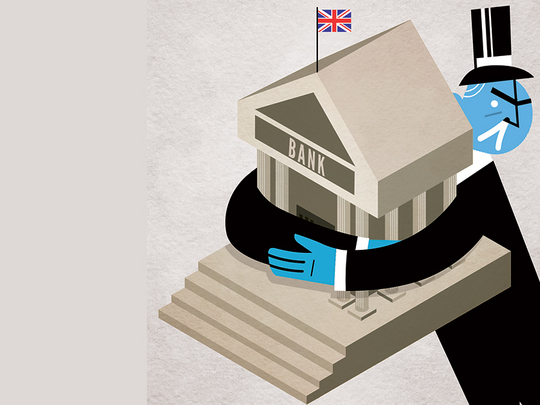
The costs imposed by the financial crises that hit western economies in 2007 have been enormous. UK gross domestic product is nearly a fifth smaller than if long-term pre-crisis growth trends had continued.
The costs also include huge rises in public debt. In the UK the increase, as a direct and indirect result of the crisis, will be close to 50 per cent of GDP.
This is the fourth most costly fiscal event of the past 225 years, after the wars with postrevolutionary France and the first and second world wars. Mismanaged finance imposes fiscal costs that are not far short of world wars.
This is the background against which to judge predictable complaints that the post-crisis regulatory regime is too onerous and will prevent banks supporting the economy as well as they did when creating the crisis. In the UK, particularly strong complaints are directed at the plan to ring-fence retail banking from other activities.
They often come from people connected to banking. But they would complain, wouldn’t they?
Ring-fencing retail banking was one of the proposals of the Independent Commission on Banking, established by the UK government in 2010 (I was a member). The commission’s terms of reference required it to make UK banks safer without undermining global competitiveness.
The ICB’s package of proposals also included greater “loss absorbency” — more funding by equity and debt that is readily convertible into equity.
Martin Taylor, former Barclays chief executive, member of the ICB and now Bank of England Financial Policy Committee member, has powerfully elucidated the logic behind ring-fencing. It had, he notes, three chief goals.
First, it was designed to make resolution of a failing bank easier by allowing the authorities to pluck out the most critical parts of the business. Second, “As long as governments stood behind a bank’s domestic business ... and as long as that domestic business was mixed in with the investment bank ... then effectively the taxpayer had no choice but to stand behind the investment bank too.”
The ring-fence was designed to subvert this “irresponsible business model”.
Finally, removing the implicit subsidy would make banking as a whole safer. Given the consequences of pre-crisis risk-taking, that had to be desirable.
The ICB did not recommend full separation between retail and investment banking because it saw the advantages of diversified risks. But it was also aware that balance-sheets of UK banks were five times GDP, far higher than in comparable countries.
The UK had to limit its exposure. Critics make a number of objections. One is that there is no reason to suppose investment banking is riskier than retail banking.
That is true. The ICB did not think otherwise. But retail banking is surely more indispensable.
Another gripe is that the ring-fence makes British banks uncompetitive in global banking. But if other governments wish to subsidise investment banking, that is their choice; it is not an argument for the UK to do so, too.
Others say the ring-fence will force UK banks abroad. Reference is made to announcements that HSBC is reconsidering its UK domicile. HSBC might indeed wish to escape the costly (and hard to justify) levy on bank balance-sheets introduced in 2011. But it cannot escape the ring-fence by leaving since its UK retail bank must remain subject to UK law.
Thus, the ring-fence cannot be a justification for doing so.
A more powerful argument is that the loss absorbency of banks is now such that the additional safety provided by ring-fencing is redundant.
One response is that the internationally agreed levels of loss absorbency is in line with the proposals of the ICB. The other is that banks remain highly leveraged.
Last year the ratio of total assets to equity of UK banks was between 20 and 30 to one. It would take modest losses to wipe out these banks’ equity.
A further objection is that we are now able to resolve troubled banks easily by converting loss-absorbing debt into equity or even winding them up. Improvements have indeed been made.
But the idea that these processes would work smoothly if a crisis again engulfed the system is unproven, if not optimistic. Ring-fencing would at least give any future government more options.
If anything is to be reconsidered it is not ring-fencing but the UK’s bank levy, which is simply a heavy tax. I would have no objection to making the boundary of the ring fence more flexible for retail banks in return for higher equity capital.
More broadly, if the capital of banks were greatly increased, the case for ring-fencing would weaken. But that is not where we now are. So ignore the whingeing.
— Financial Times












